국제음성기호
International Phonetic Alphabet (IPA)
Origin
The IPA was first published in 1888 by the Association Phonétique Internationale (International Phonetic Association), a group of French language teachers founded by Paul Passy. The aim of the organisation was to devise a system for transcribing the sounds of speech which was independent of any particular language and applicable to all languages.
A phonetic script for English created in 1847 by Isaac Pitman and Henry Ellis was used a a model for the IPA.
Uses
- The IPA is used in dictionaries to indicate the pronunciation of words.
- The IPA has often been used as a basis for creating new writing systems for previously unwritten languages.
- The IPA is used in some foreign language text books and phrase books to transcribe the sounds of languages which are written with non-latin alphabets. It is also used by non-native speakers of English when learning to speak English.
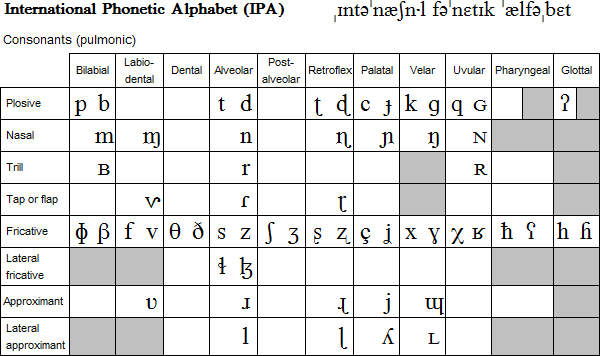
Where symbols appear in pairs, the one on the right represents a voiced consonant, while the one on the left is unvoiced. Shaded areas denote articulations judged to be impossible.
Non pulmonic consonants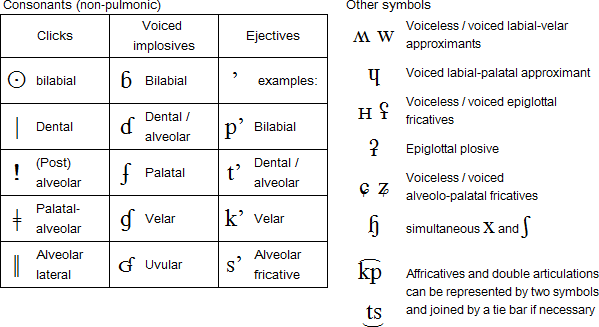
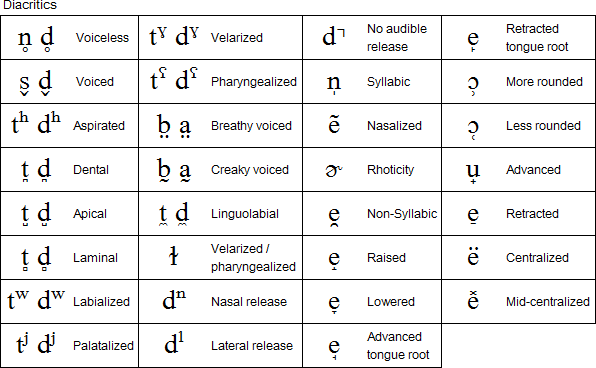
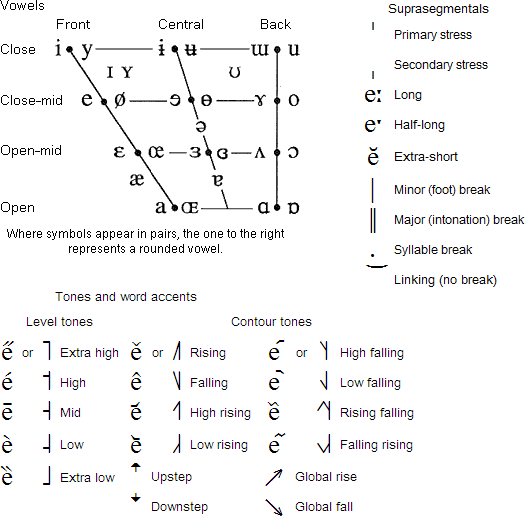
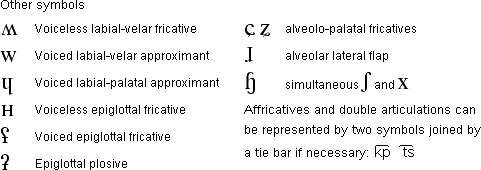
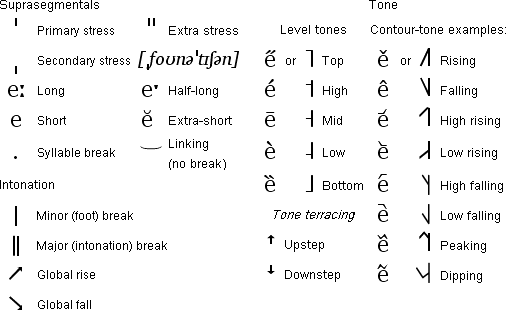
Download an Excel spreadsheet containing the IPA
How the sounds of English are represented by the IPA
![]() Recommended books about phonetics and phonology
Recommended books about phonetics and phonology
Links
Free IPA fonts
http://babel.uoregon.edu/yamada/fonts/phonetic.html
http://www.phon.ucl.ac.uk/home/wells/fonts.htm
http://www.sil.org/computing/fonts/encore-ipa.html
IPA, International Phonetic Association
http://www2.arts.gla.ac.uk/IPA
Online phonetics courses
http://www.unil.ch/ling/page30184.html
http://www.unil.ch/ling/page12580.html (en français) http://www.umanitoba.ca/faculties/arts/linguistics/russell/138/course.htm
http://www.ling.mq.edu.au/units/ling210-901/main/home/
Interactive IPA charts (include recordings of each phoneme)
http://www.paulmeier.com/ipa/charts.html
Representation of IPA with ASCII
http://www.cs.brown.edu/~dpb/ascii-ipa.html
Other phonetic alphabets
Benjamin Franklin's Phonetic Alphabet, International Phonetic Alphabet, Pitman Initial Teaching Alphabet, Unifon, Visible Speech
![]()
Copyright 1998-
출처: http://www.omniglot.com/writing/ipa.htm
원문 주소 : http://cafe86.daum.net/_c21_/bbs_read?grpid=Tep4&fldid=YKA&contentval=0004Nzzzzzzzzzzzzzzzzzzzzzzzzz